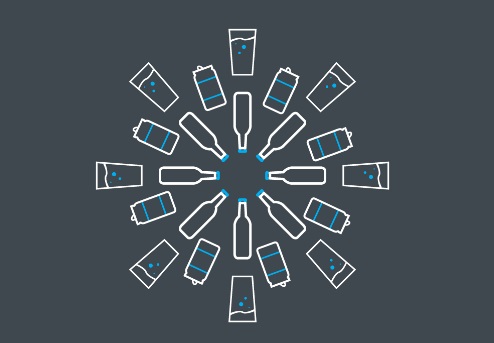 How many times have you heard that this is the year that the “next big thing” will finally make it big? In each of the last 10 years following the introduction of the first iPhone, I’ve read countless headlines claiming that this is the year that mobile commerce is really going to take off. By our own forecasts, 60% of people shopped with their phones on Cyber Monday this past holiday season, up a full 10% in just one year. And over the last three years, Americans have doubled the amount of time they spend consuming content on their phones.
How many times have you heard that this is the year that the “next big thing” will finally make it big? In each of the last 10 years following the introduction of the first iPhone, I’ve read countless headlines claiming that this is the year that mobile commerce is really going to take off. By our own forecasts, 60% of people shopped with their phones on Cyber Monday this past holiday season, up a full 10% in just one year. And over the last three years, Americans have doubled the amount of time they spend consuming content on their phones.
The trends that really matter seem to have a way of creeping up on you. They often simmer in the background for long periods, allowing you to get comfortable ignoring them while you chase what’s next. Then, by the time they really matter, it’s often too late. I can’t recall the number of times brands have asked me, “How do we not miss the next Greek yogurt, craft beer or almond milk?”
More than any other consumer industry, beauty and personal care are driven by trends. New trending ingredients, formulations, colors and brands come around every season. Walk into your average retail store and you’ll see this reflected on shelves. Here in the U.S., there are more products on shelf in the average cosmetics aisle than in any other category across fast-moving consumer goods (FMCG).
The challenges that beauty and personal care brands face are a perfect microcosm of the challenges that all brands are facing today. How do you stay relevant with shifting consumer preferences, leverage the growth of emerging channels, and be responsive to upstart indie brands all at the same time?
The secret to balancing all of these challenges is understanding the macro trend that’s driving the micro trend. For example, Americans’ shifting views of health and wellness is fundamentally driving a shift toward more natural beauty products. But, it’s also crucial that you constantly adapt your view of that macro trend. As these shifts grow from niche to mainstream, they evolve and enable new products and categories to connect with consumers.
There are three such shifts driving beauty and personal care forward. And really, these shifts are changing our relationship with all of the products we bring into our lives.
NATURAL
In beauty, as in food and many other consumer goods categories, consumers are flocking to more natural and objectively simpler products. But rather than simply accept brands’ definitions of what’s natural, consumers are deciding for themselves. While sales of cosmetics claiming to be natural have declined 1.2% over the last year (on par with cosmetics as a whole), sales of cosmetics free from parabens have grown 2.3%. Additionally, sales of cosmetics products that are both free from parabens and claim to be natural are growing 12%—five times as fast as those just meeting the paraben-free specification.
The reality is that you can no longer simply claim to be natural. The path toward natural beauty starts with creating your product in its simplest form with only the right ingredients. Then, once you have an authentic claim to natural, organic or whatever matters most to your consumer, you have the right to communicate to those consumers that your product aligns with the lifestyle inherent in that claim.
What’s the lesson to be learned? Brands need to be authentic to consumers and deliver that authenticity at a truly granular level. It’s about transparency. And this focus on granular authenticity applies well beyond natural or even health and wellness considerations. What’s in your product—and increasingly, what’s not in your products—often says more about your brand than anything else you can say.
PERSONAL
Part of the reason that brands need to focus on granular authenticity is that the average American consumer is more diverse than in generations past. Today, there is no average American consumer. So, how consumers define health (or any other need) varies widely. In fact, the same shoppers who are redefining natural beauty are themselves younger, more racially, culturally and ethnically diverse.
The products you create for these consumers need to authentically reflect that individuality. Take a brand like Fenty Beauty, for example. Not only has it released more inclusive product lines, it has also celebrated the fact that anyone can find themselves in its product lines.
Our beauty aisles are finally beginning to reflect Americans’ diversity. Over the last few years, the number of unique colors of foundation sold has grown three times as fast as the rate of general new product development across foundations. Across all makeup categories, color is the new product, with color ranges growing seven times as fast as product lines as a whole.
While beauty and personal care are some of the most personal products that a consumer can buy, all companies have an obligation to ask how they can authentically make their product more accessible to more consumers while still being true to who they are as a brand.
CONNECTED
As we’re all more digitally connected—to everything and to one another—brands now have the ability to engage consumers one-to-one, at scale. Authenticity and personal relevance is quickly becoming table stakes.
Beauty brands and retailers have provided some of the best-in-class examples of true omnichannel excellence.
It’s perhaps no surprise then that beauty products are some the first consumer goods products to see significant shifts in sales to online channels. Over the last year, nearly a third of all beauty sales have flowed through online channels.
And as social, video and other digital platforms become more shoppable themselves, it becomes easier to find inspiration and buy immediately. This shift is poised to accelerate. But digital channels are more than just new growth channels. They’re dramatically changing the path to purchase.
Brands like Glow Recipe know that platforms like Instagram are the first place that many young consumers may discover their product, so they’re creating what they call “social media-worthy packaging”—meaning they’re formulated and packaged to stand out consumers’ feeds.
While beauty and personal care shelves are certainly crowded, the endless online shelf for all FMCG categories is even more so. The more that consumers turn to social platforms and, in the near future, voice-based assistants to navigate that choice, the way that brands have to stand among the crowd will change.
While the traditional skills that have always led to success in merchandising—product, pricing, promotion, place—are still relevant, so too are the skills of modern merchandising. As new digital shelves pop up across social, video and search platforms, the tenets of good search engine optimization will be just as important for all marketers. Can you harness the best available content, at an increasingly atomic level (reviews, ratings, headlines, descriptions) to win favor with the algorithms that drive these platforms and ultimately help consumers decide what’s best?
While it may sound like you need to be everything to everyone, that’s not what I’d suggest at all. Successful brands deliver authentic products that solve consumer needs. They then consider how that offering should adapt to match the diversity of their consumer base. Technology will help get you achieve that resonance at scale, but you have to first start by asking, “who am I as a brand?”
Authored By Jordan Rost, VP, Consumer Insights


